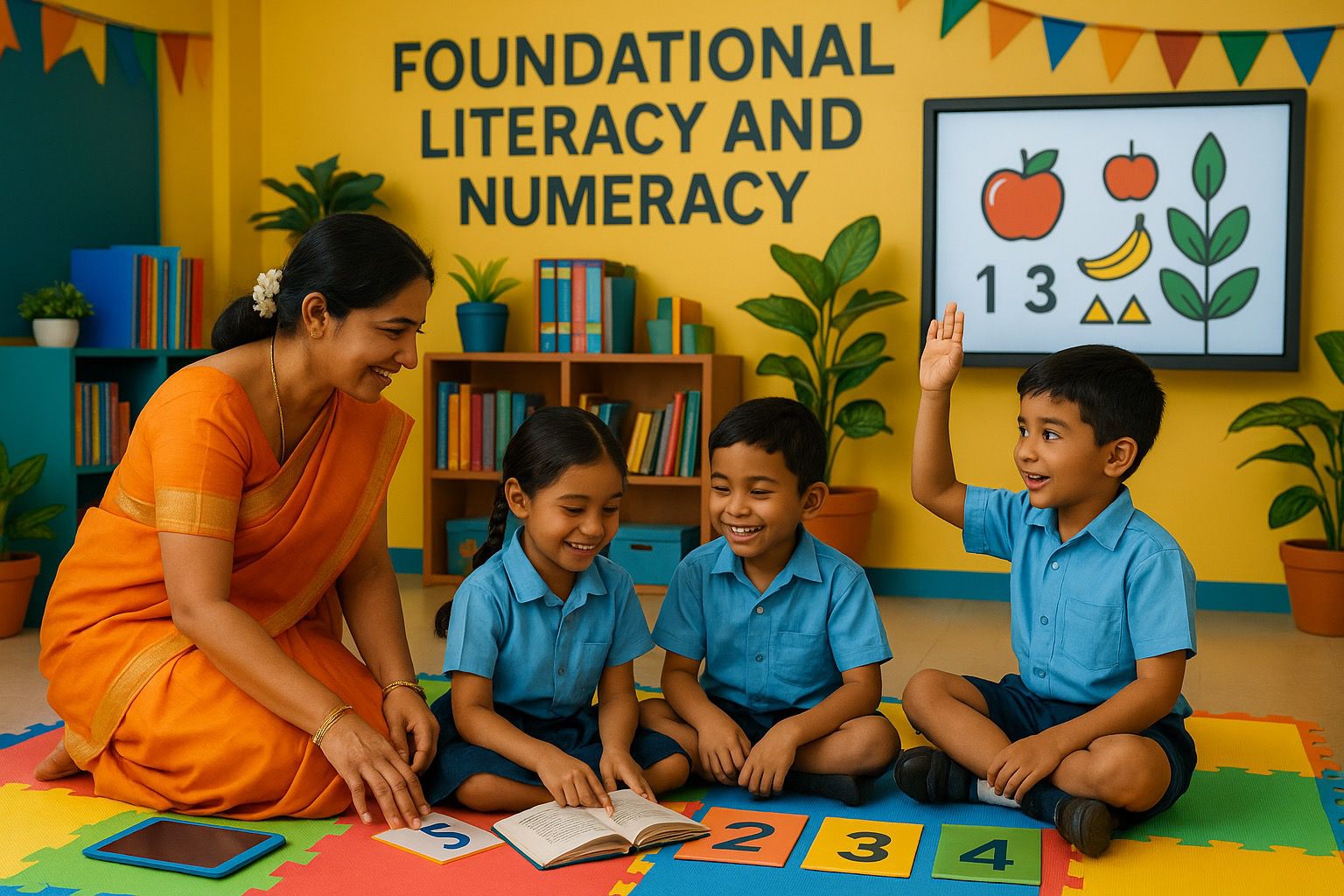India stands at a pivotal moment in its educational journey. The National Education Policy (NEP) 2020 has set an ambitious and vital goal: ensuring that every child acquires Foundational Literacy and Numeracy (FLN) by Class 2, targeting the crucial early years from ages 3 to 8. This vision is not just a policy directive—it is the bedrock for lifelong learning and future success.
Progress So Far: Encouraging Signs
Recent efforts by both central and state governments, along with data from the ASER 2024 survey, reveal significant progress:
- Over 80% of rural schools surveyed have received directives to implement FLN activities.
- More than 75% of these schools have at least one FLN-trained teacher.
- Teachers across eight states show a positive shift toward student-centered learning, indicating a growing acceptance and understanding of FLN’s importance.
Persistent Challenges on the Ground
Despite these advances, several hurdles remain between policy and consistent classroom practice:
- Infrastructure Hurdles: Many schools struggle with limited classroom space and multi-grade settings, making innovative teaching strategies difficult to implement.
- Inadequate Support Systems: While initial teacher training is provided, ongoing support is inconsistent. Some states lack effective guidance, and monitoring often focuses on data compliance rather than real classroom practices.
- Underutilized Teaching-Learning Materials (TLM): TLMs are often used for demonstration rather than direct student engagement. Teachers face challenges with material durability, storage, and clear integration into lessons.
- Syllabus vs. FLN Goals: The pressure to complete the syllabus frequently overshadows FLN objectives. State-level assessments often lack a strong FLN focus, and even when FLN-specific assessments are conducted, their results rarely inform teaching practices.
Authentic Solutions: Closing the Gap Between Policy and Practice
To bridge these gaps and realize the NEP 2020 vision, a multi-pronged approach is essential. Here are targeted, actionable solutions:
1. Strengthen Post-Training Support
- Mentorship Programs: Establish a robust network of FLN mentors at the block or district level. These mentors should conduct regular, hands-on classroom visits, providing practical demonstrations, personalized feedback, and collaborative problem-solving—moving beyond mere data collection to real pedagogical support.
- Peer Learning Networks: Facilitate regular cluster-level meetings where teachers can share best practices, discuss challenges, and co-develop solutions tailored to local infrastructure constraints. This builds a sense of community and shared responsibility.
2. Optimize TLM Integration and Development
- Curated TLM Kits with Usage Manuals: Supply every classroom with ready-made, durable FLN TLM kits, each accompanied by clear, easy-to-understand manuals outlining when and how to use each material for maximum student engagement.
- Dedicated Storage Solutions: Allocate secure storage spaces within schools to ensure TLMs are regularly used and well-maintained.
- Incentivize Teacher-Led TLM Innovation: Encourage teachers to develop their own context-specific TLMs through workshops and provide financial incentives for sharing successful, replicable models. This recognizes and rewards teacher creativity.
3. Realign Assessment with FLN Goals
- Integrated FLN Assessments: Redesign state-level assessments to integrate FLN progress, using observational assessments, portfolio-based evaluations, and short, diagnostic FLN-focused tasks—moving beyond traditional pen-and-paper methods.
- Actionable Feedback Loops: Require that FLN assessment results are analyzed at school and block levels, with clear instructions for teachers to adapt their teaching based on identified learning gaps.
- Syllabus Rationalization: Review and streamline the Class 1–3 syllabus, reducing rote content to prioritize foundational skill development and ensure realistic coverage.
4. Invest in Classroom Infrastructure
- Flexible Learning Spaces: Provide grants and guidelines for schools to create adaptable learning environments, even in limited spaces. Movable furniture and designated activity zones can maximize flexibility.
- Multi-Grade Teaching Training: Develop specialized training modules for teachers in multi-grade classrooms, equipping them with adaptive strategies and effective group management skills.
Way Forward
The NIPUN Bharat Mission’s detailed guidelines have already contributed to improved learning outcomes in government schools—a milestone in ASER’s 20-year history. By sustaining this focus and implementing systemic reforms that empower teachers, provide practical support, and align assessment with FLN goals, India can ensure that every child acquires the foundational skills necessary for a brighter, more equitable future.
“By bridging the gap between policy and practice, and empowering our teachers with the right tools and support, we can truly nurture the roots of our nation’s future.”This blog is based on insights and recommendations from the National Education Policy 2020 and the ASER 2024 survey findings.




